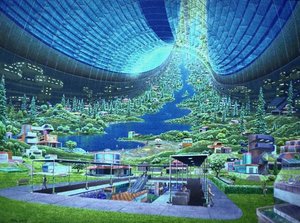Difference between revisions of "Space habitats"
| Line 1: | Line 1: | ||
{{pagebg}} | {{pagebg}} | ||
{{backto|Colonising Space}} | {{backto|Colonising Space}} | ||
| − | |||
==Places== | ==Places== | ||
| + | [[Image:Stanford torus.jpg|300px|right]] | ||
There are many places to site a habitat in space, especially within the orbit of Jupiter. | There are many places to site a habitat in space, especially within the orbit of Jupiter. | ||
Revision as of 01:36, 21 September 2006
|

